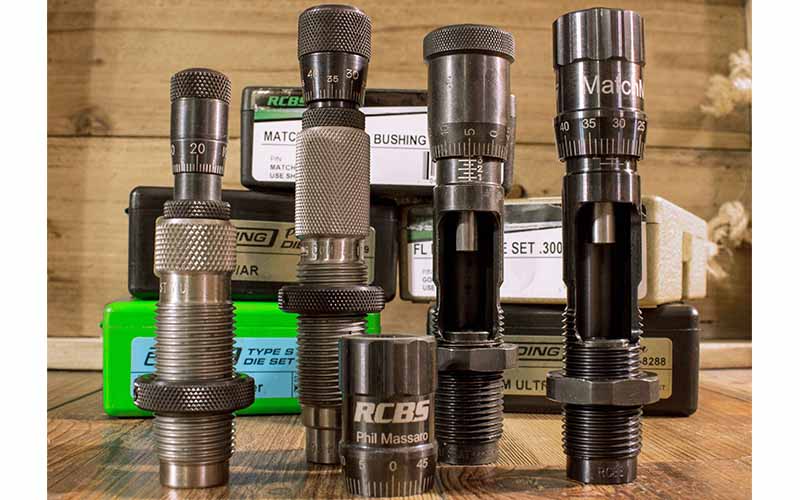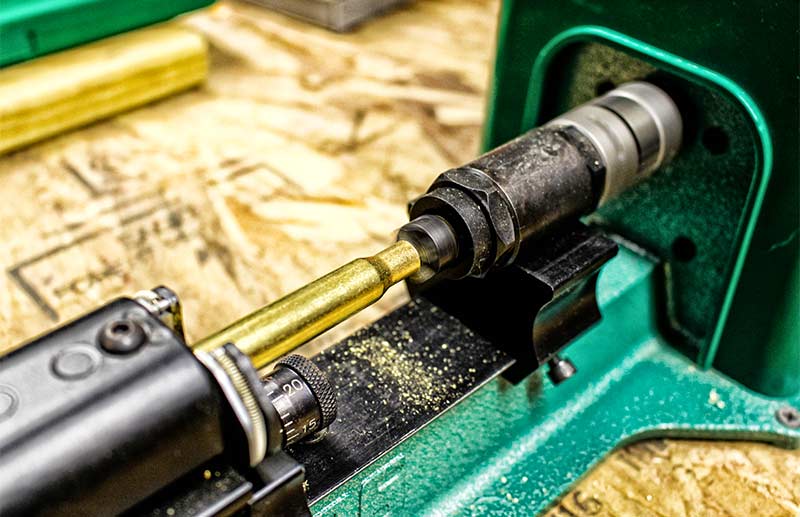
Here’s how to use micro adjustments to fine-tune your reloading and your accuracy.
Sometimes, an innovator will get a product right the first time—and I’d cite the .30-06 Springfield cartridge, the Fender Telecaster guitar and Mauser’s Model 98 bolt-action rifle. Other times, the tools and gear we use have evolved to the point that you might often look back and wonder how we used such archaic gear with any success at all.
Riflescopes are a great example of this: I looked through one of my father’s ¾-inch tube rimfire scopes the other day and felt like my vision was plagued by cataracts. I can only imagine the difficulty picking out a squirrel’s head in the top of an oak tree, especially in comparison to the 1-4x20mm that rides atop my Ruger 77/22 today.
I feel that reloading gear sits in between those two extremes. In some aspects, the gear of the 1970s and 1980s is completely unchanged and still in good working order. I have a RCBS single-stage press that might be as old as I am, and it still makes great ammo—though in all fairness it’s a simple machine.
But, when it comes to the fine-tuning, I think our reloading gear has evolved into a different set of tools altogether. I have die sets from 1960s that still work fine, but when I compare them to the modern dies, replete with micrometer adjustment dials and bushings to help preserve brass, it’s no wonder why today’s ammunition is so much more consistent.

The modern dies are one facet of reloading where I feel that an upgrade might be warranted, for the ease and accuracy of adjustment alone. With the basic bullet seating die and the simple threaded rod held in place by a nut, adjustments to seating depth are made in a sort of trial-and-error manner. Set your approximate depth, seat a bullet, observe the variance from your target depth and raise or lower the seating cup by turning the adjustment. Rinse and repeat.
Now, it’s not that you couldn’t achieve a consistent seating depth—it’s that getting there was (and still is) a pain. Welcome the micrometer-adjustable seating dies, with much rejoicing from my reloading bench.
Baby Steps
I first experienced the micrometer adjustment when I ordered a set of Redding Competition dies; the difference was immediately evident. My ammunition became more consistent, and the time spent getting to the proper dimension—cartridge base to ogive—was drastically reduced. In addition, the seating cup seems to stay put, perhaps from the spring tension on the seating plug.
When I’m loading several different bullets for the same cartridge, which happens quite often, I make notes as to the micrometer setting for each different projectile and its correlative overall length. This allows for the speedy and accurate adjustment of my seating dies, with little or no adjustment needed.
Micrometer adjustable dies are available from most manufacturers, either as a part of one of their existing dies, or as an addition to a standard seating die. RCBS has their Gold Medal and Competition series, which have a neat window cut into the side of the die body so you can place the bullet to be loaded from the side instead of underneath.
Hornady offers their Microjust Seating Stem, which can be added to their existing seating dies and gives marked adjustments to 0.001 inch. Redding offers both, with some dies coming equipped with the micrometer adjustment, and another as a replacement for their conventional seating plug. I especially like the Redding micrometer, as it’s spring-loaded and seems to be the most consistent, in my opinion. Forster has their Bench Rest Ultra Micrometer Seater Die, graduated down to 0.0005-inch increments, and while it’d be difficult to say that level of precision is both observable and repeatable, I like the effort put forth by Forster to give the reloader the control we all desire.
Looking at the moving parts of a seating die, there isn’t really a whole lot going on; once the lock ring is set to the desired depth—generally speaking, to roll crimp or not to roll crimp—it’s just the seating plug that’s the variable. The more control the reloader has over the seating depth, the better his or her handloaded ammunition will be, and a good spring-loaded seating die will certainly check all the boxes.
Micro Diversification
But a seating die isn’t the only place you’ll find a worthy application for a micrometer; Redding has applied the technology to their taper crimp die. When using a taper crimp on those pistol cartridges that headspace off the case mouth—like the 9mm Luger, .40 S&W and the .45 ACP—it’s wonderfully convenient to adjust the amount of crimp applied via a micrometer, especially when using a progressive press and switching brands of brass. If the brass is a bit thicker, dial in a tad more taper crimp; if it turns out to be thinner, back it off. Either way the micrometer adjustment lends itself as a very useful tool.

Trimming brass is another aspect of reloading where a micrometer adjustment isn’t only welcome, but might be considered necessary. I love my RCBS Universal Case Prep Center for its speed, its convenience and its accuracy, but most of all for its micrometer adjustment. When I have to trim cases to a particular length, it’s fantastic to be able to dial in the level of brass I need trimmed off and trust the machine to do exactly what I’ve asked of it, with the results turning out not only consistent but correct.
Looking at how consistent and reliable the micrometer-adjustable reloading tools are, does it warrant the abandonment of all the older designs? Well, it depends on the level of precision you’re looking for. If, like me, you pursue the utmost in accuracy, precision and consistency, then the micrometer-adjustable tools are assuredly a worthy investment.
I can confidently say this: If you’re looking to purchase any sort of new reloading tools, the micrometer-adjustable models are certainly the way to go—the additional investment will be recouped in a short amount of time.
Editor's Note: This article originally appeared in the March 2022 issue of Gun Digest the Magazine.
More On Reloading:
- Tips For Reloading the .30-06 Springfield
- Loving Your Luger: Reloading the 9mm Luger
- Handloading: Tips For Reloading The 7mm Rem Mag
- How To: Tips For Reloading the .223 Remington
- Reloading Bench: The Inside On Reloading For The .30-30 Winchester

Next Step: Get your FREE Printable Target Pack
Enhance your shooting precision with our 62 MOA Targets, perfect for rifles and handguns. Crafted in collaboration with Storm Tactical for accuracy and versatility.
Subscribe to the Gun Digest email newsletter and get your downloadable target pack sent straight to your inbox. Stay updated with the latest firearms info in the industry.

![Best Concealed Carry Guns In 2025 [Field Tested] Wilson Combat EDC X9S 1](https://gundigest.com/wp-content/uploads/Wilson-Combat-EDC-X9S-1-324x160.jpg)


![Best 9mm Carbine: Affordable PCCs [Tested] Ruger Carbine Shooting](https://gundigest.com/wp-content/uploads/Ruger-Carbine-Shooting-100x70.jpg)
![Best AR-15: Top Options Available Today [Field Tested] Harrington and Richardson PSA XM177E2 feature](https://gundigest.com/wp-content/uploads/Harrington-and-Richardson-PSA-XM177E2-feature-100x70.jpg)
